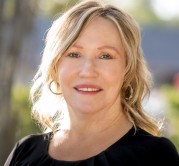Employee burnout is real: How to combat it in 2024

As we prepare for a new year, understanding what drives employee burnout and how to help combat it at all levels is critical. Coming out of COVID and returning to work environments where team members had to reconnect with other people hasn’t been easy. We’ve all had to learn to lead differently, and this work is far from complete.
Many people are feeling the effects of employee burnout today as they plan for 2024 while concurrently closing out all their 2023 projects. We get to the edge and then ask ourselves, can I do one more thing? What can I dial back? Sometimes, this results in a freefall as team members are overwhelmed and hit bottom.
This phenomenon can happen to the best of us as it begins with meaningful intentions. We naturally want to fulfill all our obligations and get everything done, but to prevent damage, we need to know where that line of burnout is and go way back behind that to prevent it.
What is burnout?
You hear about burnout in athletics when you train too much for something and then burn out. A coach or trainer, or even yourself, may push for just one more set or to run just one more mile.
This same phenomenon happens in the work world, too. Can you attend one more conference or squeeze in another meeting that day? Can you finish just one more big project?
This repetitive inner need to keep going, doing that one more thing, can put us in an Autumn space. After a long work day walking into the home to be with family, there is a sense of mental and physical exhaustion and hope that the kids don’t need anything requiring too much attention or energy. Sometimes, we sit with the remote control in our hand, reclining on the couch, eating food that does not nourish our bodies, and just hanging out and languishing without a sense of volition to move and not feeling guilty about the languishing moments!
Languishing can go on for hours and days before realizing that our mindset can shift and regain a sense of purpose. Or, we might end up just pushing that Netflix button repeatedly instead of pulling the fruits and vegetables out of the garden or being in a good place for our kids. Then, we get up in the morning and do it all again.
How can we avoid it?
Start by setting boundaries in the work environment. There are also several ways employers can help.
For example, an organization can encourage people to use their vacation days – they need it – especially those who are hero-centered and think vacations are a waste of time or only take a few days and stockpile weeks. Leaders need to model behavior that prevents burnout and develops people so that taking time off does not cause a crisis for the team or organization.
Consider the practice of buffer days – just before and after a vacation. Using buffer days does not necessarily mean taking extra days off; buffer days help prep for the time away and acclimating back to the office after a vacation break. Manage the calendar without big projects or meetings a day or two before leaving and then a day or two after returning. Encourage team members to create open space to settle in, catch up, and process emails at a moderate pace. Let go of practices that ensure near-burnout is back within days.
Another example of combating burnout is a four-day workweek. According to a recent CU Broadcast interview, a credit union that made this change in their contact center reported that the pilot was a massive success, with productivity and morale both increasing.
A renewed interest in sabbaticals is welcomed. Short leaves for two to three weeks versus three months on a rotational basis are helpful. For example, some organizations I work with start with whoever has the longest tenure and rotate from there. It’s different from PTO, creating a safe space. Hence, people know it’s OK to take time away and that their jobs will still be there when they return.
Lastly, employers can move towards open spaces on calendars. For example, isolate a four-hour segment on Friday afternoons for personal work, no meetings are scheduled, providing a space for recentering and releasing bodily tension.
Anti-burnout practice
Moving from near or full-on burnout to a self-generative way of working is life-nourishing and giving. One of my anti-burnout practices is a walking meditation, which differs from a fast-paced heart-rate walk or run. My favorite walking reflective questions are: Who am I? Who am I becoming? How can I add value? When am I the most happy? When am I most full of joy?
There is limited opportunity and potential for well-rounded, nourished, life-giving organizations, teams, and people. Start your anti-burnout practices now.

